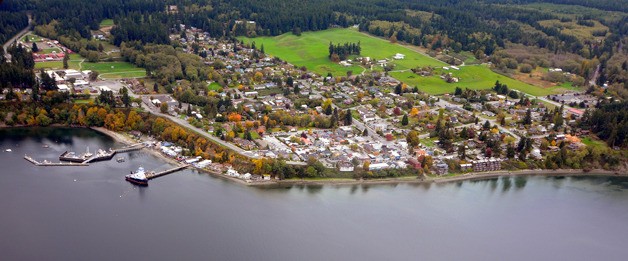Langley’s planning director and planning board are on the same page after months of disagreement over the city’s urban growth area.
The citizen board approved the planner’s recommendation to do away with a sprawling urban growth area during a regular meeting Wednesday. In place of the former urban growth area, the new one would follow city limits, except for four properties along Coles Road that are being included because the city’s sewer line already runs through their properties.
Only four of the five planning board members attended the meeting and voted for the proposal. The fifth and newest member, Ron Kasprisin, was absent and would have recused himself anyway from the vote. His property was among those included in the new urban growth area, creating a potential conflict of interest.
“It’s not a growth management issue,” said Director of Community Planning Michael Davolio. “It’s a property rights issue.”
When the city installed the sewer line in 1991, it ran through several properties in a straight path to the treatment plant on Coles Road. As part of the deal, each property was given the right to two sewer connections. One of the properties was split into two lots in 2001, with each getting a sewer connection right.
Were the city to exclude any of those from the urban growth area, it would have revoked the property owners’ ability to hook into the sewer line. Essentially, Davolio said, it would have revoked a previously granted property right and violated a contract, leaving the city open to legal challenge.
Development of that property, far away from the rest of the densely developed city, worried the planning board. If several homes sprang up on that property, it would look out of place and out of character.
Further analysis of the property, however, rendered those concerns mute. Constrained by a ravine and the fact that only one sewer hookup exists, planning board member Roger Gage said the property could not handle a “big project.”
An urban growth area is a planning boundary required under the state’s Growth Management Act. It helps keep urban areas urban and rural areas rural, limiting sprawl and development and managing growth.
With a small population growth projected for Langley over the next 20 years, the city agreed it had plenty of space within its municipal boundary to accommodate expected increases. Without any reason for an extended urban growth area, the planning board and the planner went back and forth over how to reduce it.
Initially, the planner wanted an urban growth area reduced from its current boundaries, but larger than the city limits. His concern at the time was that it would be difficult to expand if the city experienced sudden growth.
He also proposed creating a Langley gateway, similar to one that exists on Camano Island. At the major entry to the city along Camano Avenue near the fairgrounds and middle school, he wanted to include some areas for commercial development.
That was brought up later during a discussion of the city comprehensive plan update. Specifically, while discussing the land use element of the plan, planning board member Gail Fleming spoke against any inclusion of additional parking lots at the entrances to the city. Any mention of such a planning and development goal in the comprehensive plan was taken out already, but Fleming wanted to make her position perfectly clear.
“I just wanted to come out and say it to God and everyone,” Fleming said.
Her statement was supported by Marianne Edain, co-founder of Whidbey Environmental Action Network and a member of the city’s Parks and Open Space Commission.
“Nobody wants to visit parking lots,” Edain said.
Disagreement between the planner and planning board resulted in the city council tasking them to meet again, sort out the issues they differed on and present a unified proposal for their consideration.
After meeting with Island County planning staff and receiving reassurances that Langley’s urban growth area could expand, if necessary, he agreed with the planning board.
The Langley City Council will likely consider the urban growth area proposal at its Monday, Nov. 2 meeting.



